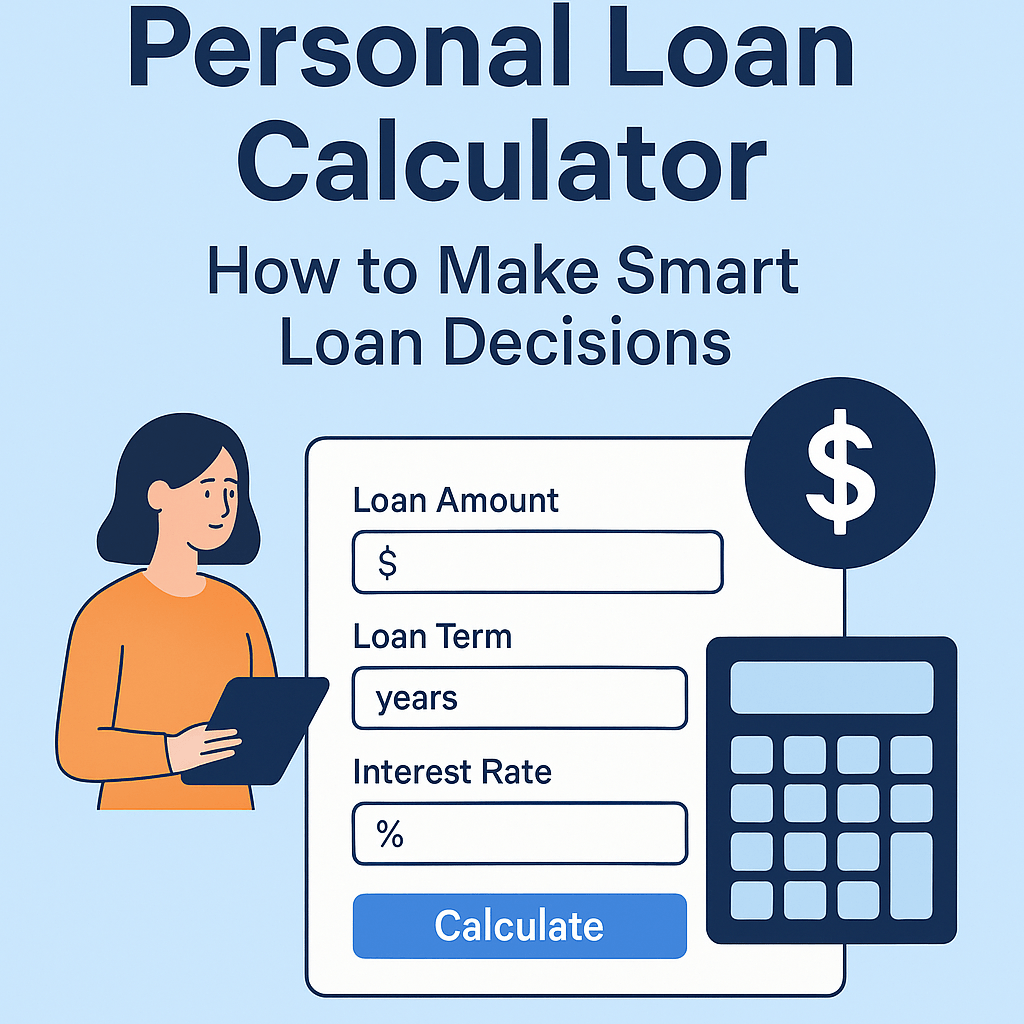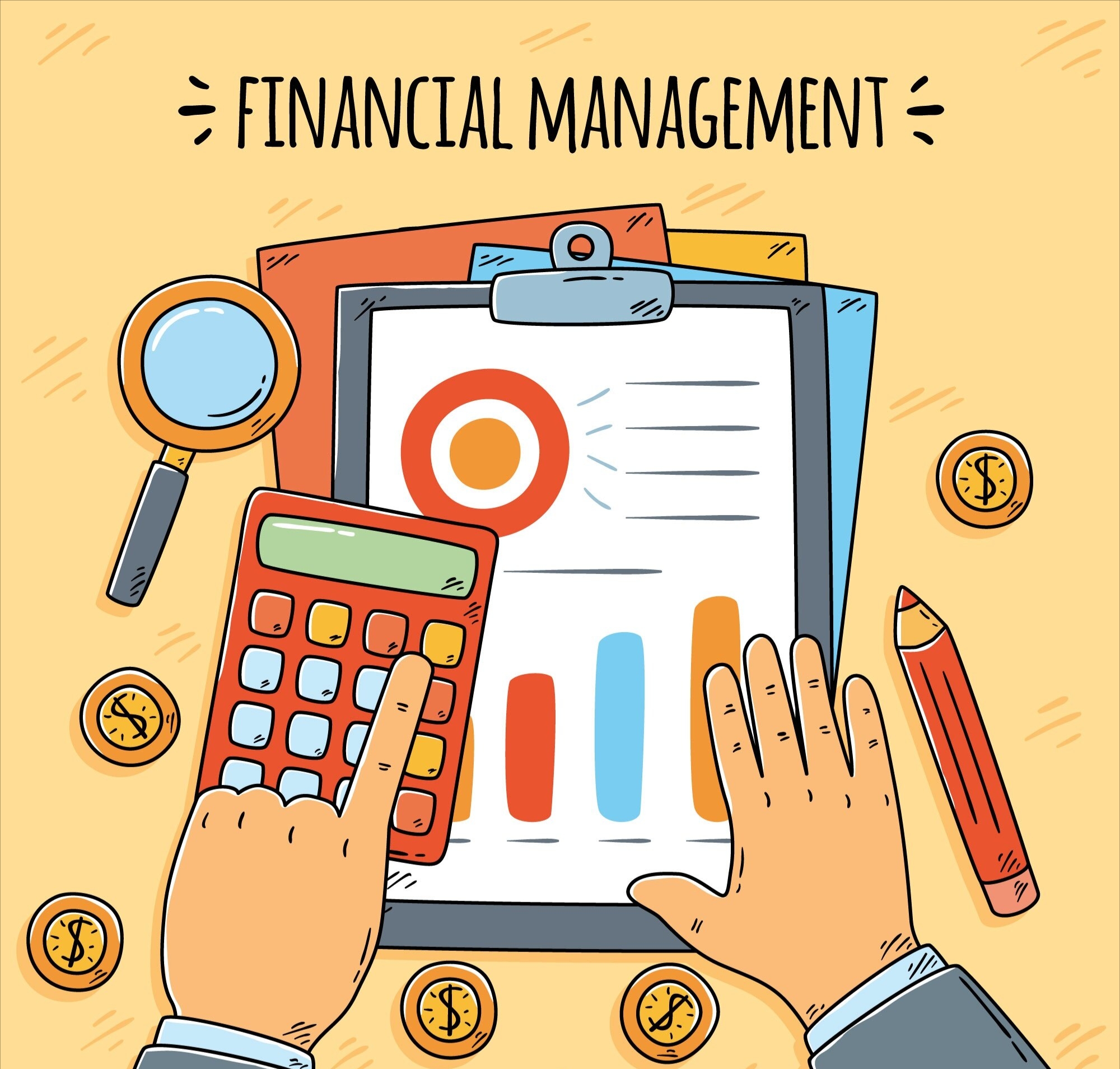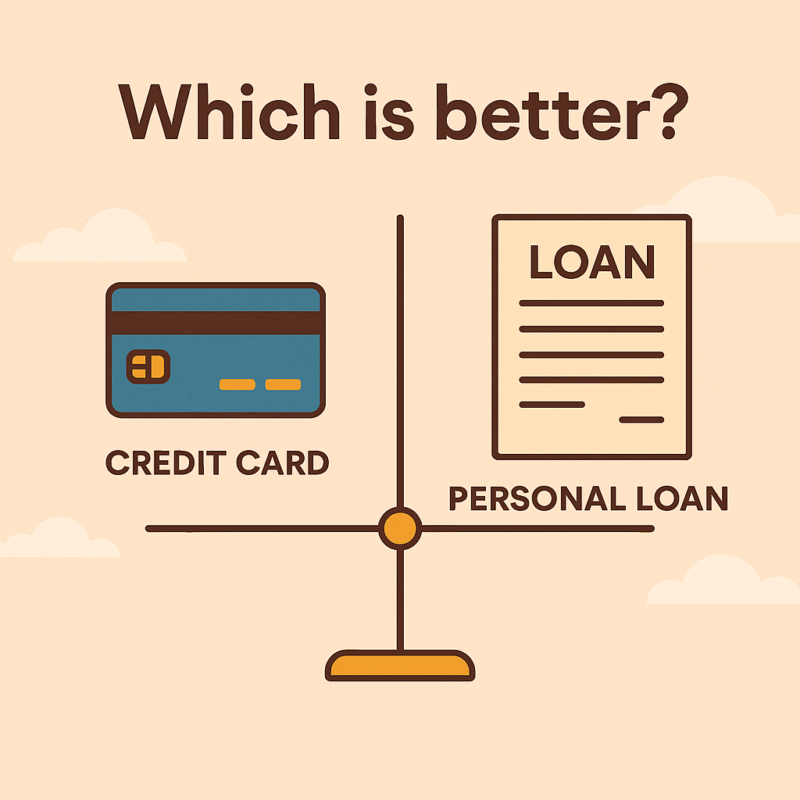When it comes to taking out a personal loan, understanding the full cost of borrowing is essential. A personal loan calculator is an invaluable tool that can help you assess the monthly payments, total repayment, and overall cost of a loan. Whether you’re looking to consolidate debt, finance a big purchase, or cover an emergency, knowing how to use a personal loan calculator can make all the difference in your financial planning.
In this blog post, we’ll walk you through how to effectively use a personal loan calculator, factors affecting loan terms, and tips on how to make informed borrowing decisions. Let’s dive in!
Table of Contents

What Is a Personal Loan Calculator?
A personal loan calculator is an online tool that helps you estimate the monthly payments and total cost of a personal loan based on key inputs such as the loan amount, interest rate, and loan term. By using this tool, you can quickly determine how much you’ll need to repay each month and understand how much interest you’ll pay over the life of the loan.
Whether you’re planning for a loan of $5,000 or $50,000, using a personal loan calculator can help you plan your finances and ensure that you don’t borrow more than you can afford to repay.
How to Use a Personal Loan Calculator: A Step-by-Step Guide
Using a personal loan calculator is simple. Here’s a breakdown of how you can use it to assess your loan options:
1. Enter Your Loan Amount
The first step is to input the amount you wish to borrow. This will be the principal sum of your loan. Loan amounts typically range from a few hundred dollars to several thousand, depending on your needs and the lender’s policies.
2. Choose Your Loan Term
The next step is selecting the repayment period (or loan term). Loan terms typically range from 1 to 5 years, with longer terms lowering your monthly payment but increasing the total interest you’ll pay over the life of the loan.
3. Input Your Interest Rate
The interest rate you’ll pay on the loan is the next key input. You can obtain your interest rate based on your credit score and the lender’s policies. Loan calculators typically allow you to enter a fixed interest rate for fixed-rate loans or a variable rate for variable-rate loans.
4. Calculate Your Monthly Payments
Once all the details are entered, the personal loan calculator will automatically calculate your monthly payment based on the loan amount, interest rate, and term. It will also provide the total amount you’ll pay over the loan’s lifetime.
Factors That Affect Personal Loan Interest Rates
Personal loan interest rates can vary depending on several factors, which will affect the outcome shown in a personal loan calculator. Some of the key factors include:
1. Credit Score
Your credit score plays a significant role in determining your interest rate. Lenders use your credit history to gauge how risky a borrower you are. Higher credit scores generally mean lower interest rates, while lower scores may result in higher rates.
2. Loan Term

The length of your loan can also impact the interest rate. Longer loan terms often come with higher rates due to the extended repayment period, while shorter loan terms tend to have lower rates.
3. Loan Amount
Large loan amounts can sometimes attract higher interest rates. Lenders may increase rates for larger loans to offset the risk of lending more money.
4. Economic Conditions
Interest rates are influenced by the broader economy. During periods of inflation or economic instability, lenders may raise interest rates, while in stable economic conditions, rates tend to be lower.
5. Lender’s Policies
Different lenders have different policies regarding interest rates. Some might offer promotional low-interest rates, while others may have higher base rates but with fewer fees.
Personal Loan vs. Credit Card: Which Is the Better Option?
When it comes to financing a large purchase or consolidating debt, you might be weighing the pros and cons of a personal loan versus a credit card. Let’s break down both options:
| Factor | Personal Loan | Credit Card |
|---|---|---|
| Interest Rates | Generally lower (6-36%) | High, often 15-20% or more |
| Payment Structure | Fixed monthly payments | Minimum payment, but can vary month-to-month |
| Loan Terms | Typically 1-5 years | No specific term; debt can linger indefinitely |
| Fees and Charges | Often have origination fees or early repayment penalties | Potential for annual fees, late fees, and high APR |
| Best For | Large purchases, debt consolidation | Smaller purchases or ongoing balance management |
Personal Loan Advantages
- Fixed monthly payments: Personal loans have predictable repayment schedules, which makes it easier to budget.
- Lower interest rates: If you qualify for a good interest rate, a personal loan will likely be cheaper in the long run compared to credit cards.
Credit Card Advantages
- Flexibility: Credit cards offer more flexibility since you can pay off the balance at your own pace (though this often results in paying more interest).
- Rewards: Some credit cards offer rewards programs like cashback or travel miles, making them beneficial for frequent users.
Using a personal loan calculator can help you compare the total repayment costs between the two options and make a more informed decision.
Personal Loan Calculator for Debt Consolidation
One of the most common uses for a personal loan is debt consolidation. By taking out a personal loan to pay off high-interest credit cards and other loans, you can simplify your finances and potentially save on interest.
How to Use the Calculator for Debt Consolidation
To use a personal loan calculator for debt consolidation:
- Add Up Your Debt: Total all your debts (credit card balances, loans, etc.).
- Calculate the New Loan: Enter the total debt amount, the new interest rate (lower than the average of your current rates), and your preferred loan term into the calculator.
- Compare the Results: See how your new monthly payment compares with the sum of your current debt payments. A successful consolidation should lower your overall monthly payment and reduce your total interest paid.
Fixed vs. Variable Interest Rates: Which Is Better for You?
When you apply for a personal loan, you’ll be given the option to choose between fixed and variable interest rates. Here’s how they compare:
| Factor | Fixed Rate | Variable Rate |
|---|---|---|
| Interest Rate | Remains the same throughout the loan | Changes periodically based on market conditions |
| Monthly Payments | Fixed, predictable | Can change if the rate changes |
| Best For | Borrowers who want consistency and predictability | Borrowers willing to accept risk for potentially lower rates |
A fixed-rate loan will provide you with a consistent monthly payment throughout the loan term, making budgeting easier. However, variable-rate loans might offer lower initial rates, though they carry the risk of increasing rates in the future.
Understanding the Impact of Loan Prepayments
Making extra payments towards your loan can help reduce the total interest you pay and shorten the loan term. Here’s how it works:
- Early Repayments: By paying more than the minimum monthly payment, you reduce the principal balance faster. This can result in significant savings on interest.
- Using a Personal Loan Calculator: You can input extra payments into the calculator to see how they will impact your repayment schedule and interest costs.
Frequently Asked Questions (FAQ)
1. How accurate is a personal loan calculator?
A personal loan calculator provides estimates based on the inputs you enter. While it gives you a good idea of what to expect, actual loan terms may vary based on your credit score and lender policies.
2. Can I use a personal loan calculator for any type of loan?
Yes! Personal loan calculators can be used for various types of personal loans, including debt consolidation, home improvement loans, and emergency loans.
3. What’s the best loan term for a personal loan?
It depends on your financial situation. Shorter loan terms will have higher monthly payments but lower overall interest. Longer loan terms will lower monthly payments but increase the total interest paid.
Conclusion and Call-to-Action
A personal loan calculator is an essential tool that helps you make informed decisions about borrowing. Whether you’re considering debt consolidation, funding a large purchase, or simply comparing loan options, this tool can provide valuable insights.
If you’re ready to take the next step in securing your personal loan or want to explore more tips on managing finances, check out our related posts below.
Related Posts:
- Instant Loan vs Credit Card Loan: Which is Better for You in 2025?
- Avoid a Loan Trap: 10 Must-Know Moves
Start planning your loan journey today with the help of a personal loan calculator!





